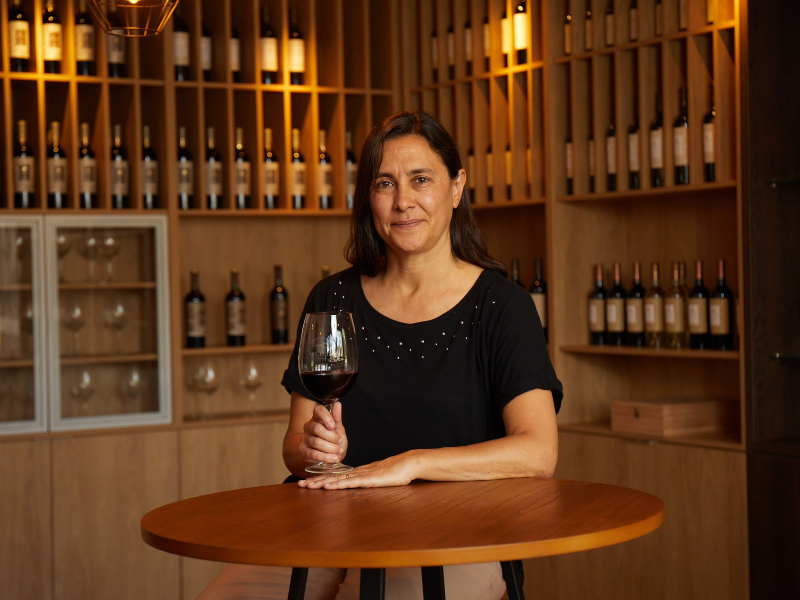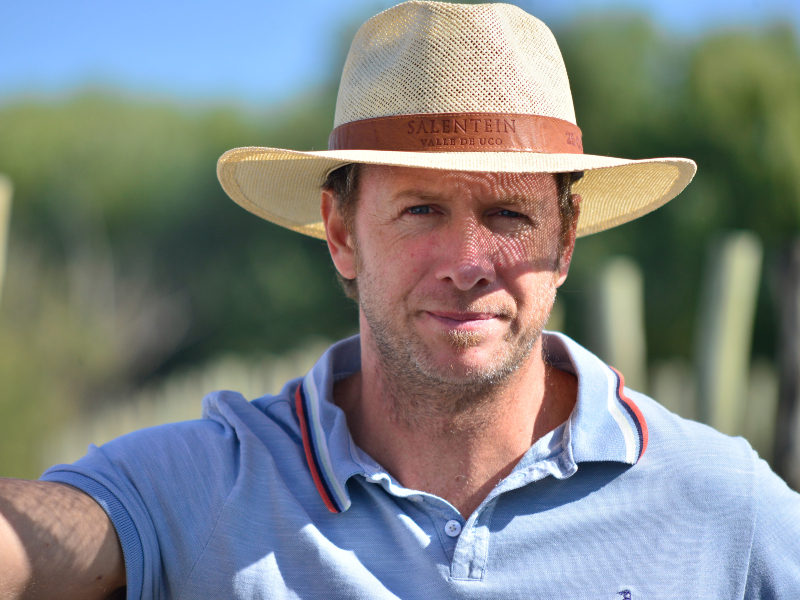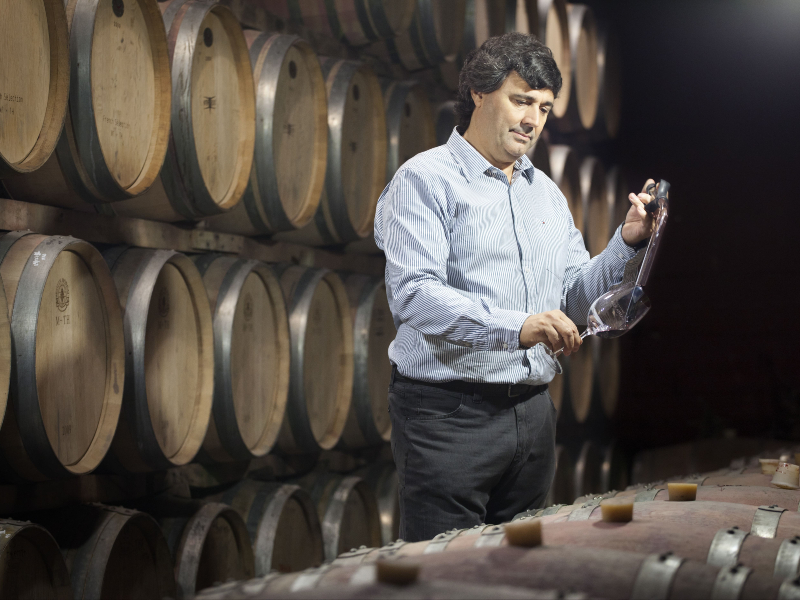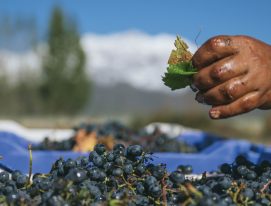International Cabernet Sauvignon Day is always good excuse to remind ourselves that Argentina, which is renowned the world over for its Malbecs, has also made astounding progress with its Cabernet Sauvignons. Today, it’s the third most widespread variety in the country with over 13,000 hectares under vine. But it’s not just about quantity: oenologists, winemakers and farmers are working tirelessly to make ever better wines that express their terroirs in unique ways through a grape that has a long history in Argentine viticulture.
Argentine Cabernet Sauvignon: regions and styles
Argentina boasts at least three clearly different styles of Cabernet Sauvignon, all products of a continental climate. In contrast to more famous regions elsewhere, in Argentina Cabernet Sauvignon is grown in arid, mountainous terroirs. Maipú and Luján de Cuyo in the Province of Mendoza are the regions with the oldest vines and account for 77% overall at heights ranging between 2300 and 3100 feet above sea level. The warm, dry climate helps the grapes to ripen and instills them with an intense, voluptuous character with good body and structure.
High altitude, cool climate Cabernet Sauvignons are made in the Uco Valley at heights of between 3200 and 5000 feet, with the cooler conditions making the wines more vibrant. Here, reds ripen more slowly and are harvested with more natural acidity and freshness, lending them a special character. Finally, the Cabernet Sauvignons of the northwest, around Cafayate in the heart of the Calchaquí Valleys, are made at a height of 5700 feet and above and develop a spicy profile with herbal, mentholated notes thanks to the extreme climate and a well-defined thermal range that sees the grapes ripen in the day and amass acidity and aromas at night.
The boom in Argentine Cabernet Sauvignon through the eyes of the experts

What lies behind the improvement in the reputation of Argentine Cabernet Sauvignon in recent years? Andrea Ferreyra at Finca La Celia in San Carlos, Uco Valley, thinks that even though surface area under vine has fallen in the past 10 years (by about 17%), “it has improved (a lot) in terms of quality and new examples keep appearing in wineries’ portfolios. I think that in part it’s to diversify how we present ourselves as makers of Argentine wines, showing that we have excellent terroirs with superb potential for the production of Cabernet Sauvignon.”

Jorge Cabezas at Bodega Salentein in the Uco Valley believes that the growth is “in great part due to a better understanding of the country’s terroirs. From the high regions in Mendoza such as the Uco Valley, to the extreme regions to the north and south, we have learned to handle the variety with great precision, allowing it to express its identity in a diverse range of soils and climates.”
Rodrigo Romero at Bodega Toso in Maipú adds: “the great diversity of regions and terroirs means that we can produce all manner of Cabernet Sauvignons, from young and fresh to spicy and fruity to concentrated wines with well-defined tannins and colors and excellent cellar potential.” Diana Fornasero at Viña Cobos, Mendoza, says that expertise is key. “Improvements in agricultural practices, canopy management, interpreting the needs of the variety in each region and understanding how it expresses itself … The doors of the world were opened by Malbec and the resulting improvement in quality meant that we could move on to new challenges with other varieties, the first of which was Cabernet Sauvignon.”

Opi Sadler at La Mascota Wines places the emphasis on potential. “It’s a variety with a long ripening cycle that needs mild climates and gentle, mellow autumns that allow the grapes to ripen fully. Another significant factor is the brightness of the sunlight during the day which allows for a reduction in pyrazines, which bring green pepper aromas that consumers across the world tend not to like and enhancing the fresh red fruit for which our Cabernet Sauvignons are known.”
Cabernet Sauvignon: a promising future
Andrea Ferreyra says that perfecting the quality will be key to the variety’s growth, as will exploration of new regions, in a similar way to Malbec. Diana Fornasero adds the importance of communication and a strategic vision for the development of plantations in regions where the terroirs favor quality, for instance in Luján de Cuyo.
Jorge Cabeza says that adapting to climate change and adjusting farming practices to achieve a balance will be fundamental. “The growth and fine-tuning of Cabernet Sauvignon in Argentina will depend on how perseverant we are in seeking to capture the essence of our different regions, with a focus on authenticity and sustainability.”
Why drink Argentine Cabernet Sauvignon?
Andrea Ferreyra replies, “Although Argentina is synonymous with Malbec, it has a strong history of Cabernet Sauvignon production and that’s coming back to the fore. Cabernet in Argentina has a lot of different facets and the style depends on the qualities that each oenologist wants to bring out.”
At Viña Cobos they highlight its elegant, fruity character and classical, herbal notes achieved through painstaking work in the vineyard. Fornasero adds, “Cabernet Sauvignon brings intensity, structure and versatility. Every winery focuses on a different aspect of the same variety, which makes it different from the traditional styles found in the rest of the world.”
“Our Cabernet Sauvignon Primus has won major international honors such as the award for best Cabernet in the world at the Asian Wine Masters in Hong Kong. The big critics highlight the way we are able to combine power and elegance,” says Cabeza.

Alejandro Pepa at El Esteco, Salta, says: “Now that we’re putting the same emphasis and focus on it as we did for Malbec, I think that today we’re producing some extraordinary Cabernet Sauvignons. In every bottle of Cabernet Sauvignon produced in northwest Argentina you’re taken to a small terroir, one of the highest in the world. It’s a journey to something quite different in the wonderful world of Argentine Cabernet Sauvignons. Generally they have a plush beginning followed by a full body before refined mineral notes wrap around your palate alongside a very rewarding structure.”
Javier Lo Forte at Pulenta Estate is proud of the what has been achieved so far. “The Cabernet Sauvignons produced in Alto Agrelo, Luján de Cuyo, at our Pulenta Estate, come from vineyards planted by Don Antonio Pulenta in 1992, and have wonderful balance and harmony. We have old vineyards that produce the perfect amount of grapes for good concentration and character apt for just that kind of wine: elegant, mellow, and refined. Today, I’d recommend to a consumer that they choose a Cabernet from Alto Agrelo because they have all the heft, all the power and character, but are also enjoyable wines, the kind you really savor.”



